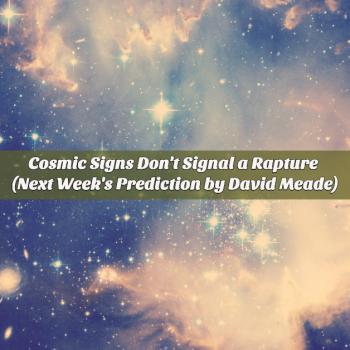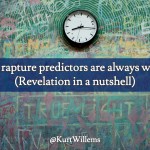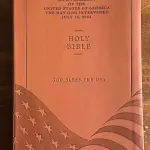This is the third post in a series titled: Earthquakes… Signs of the Times? I invite you to check out the rest of the series here to catch up, so to speak ![]() This is a series exploring whether or not we can say that natural disasters are indicators of the imminent return of Christ/ end times/ rapture. My argument is no, but I’ll let you be the judge to see if the following argument holds up. Let’s continue…
This is a series exploring whether or not we can say that natural disasters are indicators of the imminent return of Christ/ end times/ rapture. My argument is no, but I’ll let you be the judge to see if the following argument holds up. Let’s continue…
————————————————————————
The first part of our Mark 13 text has Jesus and his disciples exiting the Temple and heading towards the Mount of Olives. After the remarks of his disciples, Jesus comments that “not one stone will be left on another.” This leads to the disciples questions that provide the landscape of the rest of the chapter: 1) “Tell us, when will these things happen?” 2) “And what will be the sign that they are all about to be fulfilled?” Many modern interpreters have looked at these questions and supposed that Jesus extends them in such a way that they become a launching point to discuss the end of the space-time universe. Rather than just being about the disciples’ near future, they are also about a yet-to-be fulfilled future. John MacArthur, for instance, believes that Jesus’ statements were fulfilled in regards to the destruction under the invading Romans in the first century; however, the “…most important aspects of His prophecy were not fulfilled in the destruction in AD 70.”[1] This type of reading leaves the interpretive door wide open for people to speculate about modern events such as the Haitian earthquake as being a ‘sign’ pointing to the still coming tribulation. Critical to interpreting the rest of Mark 13 will be determining to whom these questions are addressed. Andrew Perriman states:
But the questions put by the disciples are not our questions. Jesus is not—on the fact of it—addressing the concerns of a later Gentile church impatient for, or skeptical about, the second coming. If we allow the historical dimension to be collapsed in this way, we risk severely damaging the delicate tissue of significance that connects the discourse with the actual historical circumstances that it both presupposes and predicts. The narrative setting in thee Gospels must be taken seriously.[2]
If Perriman is correct, then we must choose to allow the context of the conversation that Jesus had with his disciples (immediate, historical, social, and canonical contexts) to set the course for our reading of what will follow as Jesus’ answer to their questions. And we should note: nowhere in Mark 13.1-4[3] is the idea of the “end” even mentioned. Yet, because of popular theologies it is easy for us to instantly read this idea into the passage. But according to what we have here, as Tim Geddert rightly recognizes: “We cannot be sure whether the disciples have the End in mind at all.”[4] Nevertheless, he reads this chapter as having been partially fulfilled in the events of 70 AD, but not fully. To this point we shall return in a future post.
Why do we often read this passage as though Jesus is answering our questions about the future? Who do you think has a better argument: MacArthur or Perriman? OTHER THOUGHTS?
[1]. John MacArthur, The Second Coming: Sings of Christ’s Return and The End of The Age(Weaton: Crossway Books, 1999), 78.
[2]. Andrew Perriman, The Coming of The Son of Man: New Testament Eschatology for an Emerging Church (Waynesboro, Georgia: Paternoster Press, 2005), 18-19.
[3] This study is not on a synoptic harmony of this discourse, so let’s not read Matthew too quickly into Mark regarding the addition of “end of the age.” Even so, Matthew is probably speaking of the end of the age sacrifice, not the time-space universe.
[4]. Timothy J. Geddert, Mark, Believers Church Bible Commentary (Scottdale, PA: Herald Press, 2001), 305.














